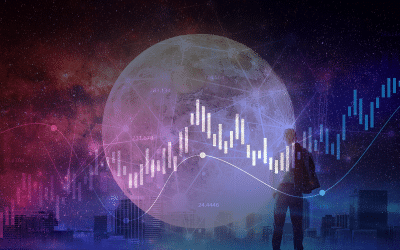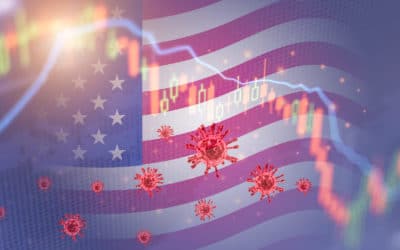John Leiper – Chief Investment Officer – 2nd December 2020
Markets are ebullient, and they have every reason to be.
It’s been three weeks since the break-through news that Pfizer/BioNTech had developed a vaccine with 94% efficacy in phase three trials. Moderna and Astra Zeneca followed hot on their heels, putting multiple runners in the race for approval. That approval could be in place in the US as early as December 10th, when the Vaccines and Related Biological Products Advisory Committee meets to discuss the Pfizer/BioNTech request for emergency use authorisation (the meeting will be live-streamed on the FDA’s website). It is very likely that authorisation will be granted, following the UK regulator, MHRA’s, decision to approve the vaccine for widespread use, the first country in the world to do so. As a result, the discussion will quickly shift to vaccine roll-out logistics. The US and EU have already secured large contracts and the base case scenario assumes rapid vaccine deployment, estimated at 2 billion doses, for 1 billion people, throughout 2021. These vaccines will prove most effective in developed countries for whom the -70 degrees storage temperature is not an issue. The Astra Zeneca vaccine is not yet baked into these numbers and does not requires such onerous storing conditions, making it particularly beneficial for developing countries. On the demand side, it’s positive to see that attitudes towards taking a vaccine are improving, as evidenced by a recent Gallup poll which found 58% of Americans were willing to take an FDA approved vaccine, up from 50% in mid-September. That number will only increase as it becomes increasingly apparent that vaccination will be a necessary pre-condition for re-integration into commercial and social life.
This should allow a gradual reopening of the economy in 2021, catalysing a resurgence in demand against a backdrop of lower for longer interest rates, massive liquidity injections and fiscal stimulus programs. Stimulus usually works with a time lag, the benefits of which could very well coincide with the removal of relaxations, making 2021 a bumper year. That narrative went into overdrive last week when Donald Trump finally acknowledged the transfer of power to President-elect Biden, who in-turn upped the ante by announcing his intention to nominate Janet Yellen as US Treasury Secretary. As former Fed chair, she is highly experienced, a known quantity, and someone who will seek to closely coordinate fiscal and monetary policy. This coordination was a key feature of the initial policy response under the CARES act and one she will look to reinstate tout suite following Steve Mnuchin’s curious decision to unwind some of the Fed’s emergency lending programs. Markets reacted positively to the announcement helping cap what has been an extraordinary and record-breaking month for global equity markets. The MSCI World equity market set its best month ever rising 12.66%, just ahead of the FTSE 100 equity index which rose 12.35%, its best performance since 1989.
After a brief breather on Monday the bull market resumed on Tuesday following the publication of Chinese manufacturing data, showing factory activity growth at decade highs, and in the US, bi-partisan proposal for a $908 billion COVID-19 relief bill (promptly rejected by Mitch McConnell). The big question is… can the good times roll on?
There are growing signs they just well might. The US dollar index has broken decisively lower, below 92 to levels last seen in April 2018. That opens up a further 2.5% downside before the next key low in 2014 at 80 (15% downside). US dollar weakness helps ease financial conditions, notably in emerging markets which have liabilities in dollars. Key drivers for further weakness include the ongoing US trade deficit, easy monetary policy and potential for stronger economic growth outside the US.
On mobile: review detail in landscape mode
One key risk to monitor is EUR/USD, which recently broke above 1.20. Historically the ECB has sought to cap the exchange rate below this level and has intervened verbally on numerous occasions historically to do so. Further dollar index weakness will require ongoing EUR strength so we will see what the ECB does at its next meeting on Thursday 10th although we remain open to a repeat of the 2017 playbook where EUR/USD rose to 1.25 in the aftermath of the US election.
On mobile: review detail in landscape mode
In bond land, the 10-year US Treasury yield is back up to 0.92% and inflation expectations, as measured by the 10yr breakeven rate is at 1.82%, its highest level since May 2019. These were all necessary preconditions for a continuation of the great rotation we are witnessing from growth to value as documented here and here.
Given the rampant positivity running through this week’s blog, it felt prudent to end on a negative. Optimism is already extreme. This is evident from a range of indicators including the Citi Panic/Euphoria index, the CNN Fear/Greed index and AAII Investor Sentiment survey, conducted by the American Association of Individual Investors. It’s also clear from the latest Bank of America global fund manager report which is the most bullish of 2020, pricing in a 20-year high in GDP expectations and the lowest fund manager cash levels since before the crisis, close to the contrarian ‘sell signal” indicator. Technically, the next resistance level for the S&P 500 is just ahead and there are signs of a growing divergence signalling a potential pullback. Notably, at the time of writing over 90% of S&P 500 constituents are trading above their 200 day moving average. There is clearly a lot of uncertainty yet to work its way through the system. Even if the COVID-19 vaccines are unanimously approved, and governments are able to deliver a smooth roll-out and electorates are willing to participate, the global economy has nonetheless suffered a major shock and it will still take considerable effort, and ongoing support, for individuals, households and businesses to fully bounce back. That will involve ongoing bouts of market volatility particularly during the cold winter months when the latest wave is likely to peak. If we are already ahead of ourselves then many investors, who have already bought the rumour, may well sell the fact (vaccine).
Yet I cannot shake my belief that investors are right to look through the gloom to the light at the end of the tunnel. If they do then the economy, and markets, could well surprise to the upside.
On mobile: review detail in landscape mode
As demonstrated in the chart above, the recent market bottom represented an excellent long-term buying opportunity. Having raised cash earlier in March 2020 we took advantage of the pick-up in risk sentiment and increased our exposure to global equities. As a result, the portfolios have performed well and are predominantly ranked in the first quartile IA sector since the market bottom on the 23rd March. However, further upside opportunity exists with gains to the central white trend line consistent with Goldman Sachs recent forecast for the S&P 500 of 4,300 by the end of 2021.
This investment Blog is published and provided for informational purposes only. The information in the Blog constitutes the author’s own opinions. None of the information contained in the Blog constitutes a recommendation that any particular investment strategy is suitable for any specific person. Source of data: Bloomberg, Tavistock Wealth Limited unless otherwise stated.
Want to know more about the Equity Markets?
Please contact us here:
The Great Rotation
In Nothing Is More Powerful Than An Idea Whose Time Has Come, published in November, we introduced the idea of a Great Rotation across US equity markets.
The Unemployment Problem
The Fed’s dual mandate is price stability and maximum employment, but Jerome Powell has been unequivocal that it’s all about the latter.
Reflections
This is the first blog since the holiday break. Whilst travel restrictions meant it wasn’t the holiday that had been planned, we adapted, and enjoyed the opportunity to spend some time together as a family and reflect on the last few months.
Rise of the Underdog
In its latest economic outlook, the OECD increased its expectations for global GDP. For 2020, the improvement is minimal, reflecting an upward revision, in real GDP, from -4.5% to -4.2%. But beyond that, growing economic momentum should boost global growth to pre-pandemic levels, estimated at 4.2% in 2021 and 3.7% in 2022.
Since the Market Low
The ACUMEN Portfolios continued their strong run throughout October, largely outperforming the market composite benchmark and IA sectors (used for peer group comparison purposes) which lost ground across the board.
Canary in the Vol-mine
With the US election just 8 days away, financial markets are following the polls and pricing in a Biden win. The prospect for a Democratic clean sweep has contributed to the rising ‘Blue Wave’ narrative benefiting those companies that stand to benefit from Democratic party policy.
Investment Philosophy
A 2018 study by Dalbar suggests that the traditional route of identifying Fund Managers consistently outperforming in their sector or industry, (“Fund Picking”), seems to have fallen by the wayside.
Pivot To ESG
The recovery in US equity prices, from the corona crisis, has been one of the most rapid in history.
THE CHINESE TECH STRUCTURAL GROWTH STORY
Commodities are nothing if not cyclical. They rise and fall in value with remarkable consistency over time.
The Return of Inflation
Quantitative easing, or QE, is where a central bank creates money to buy bonds. The goal is to keep interest rates low and to stimulate the economy during periods of economic stress.










